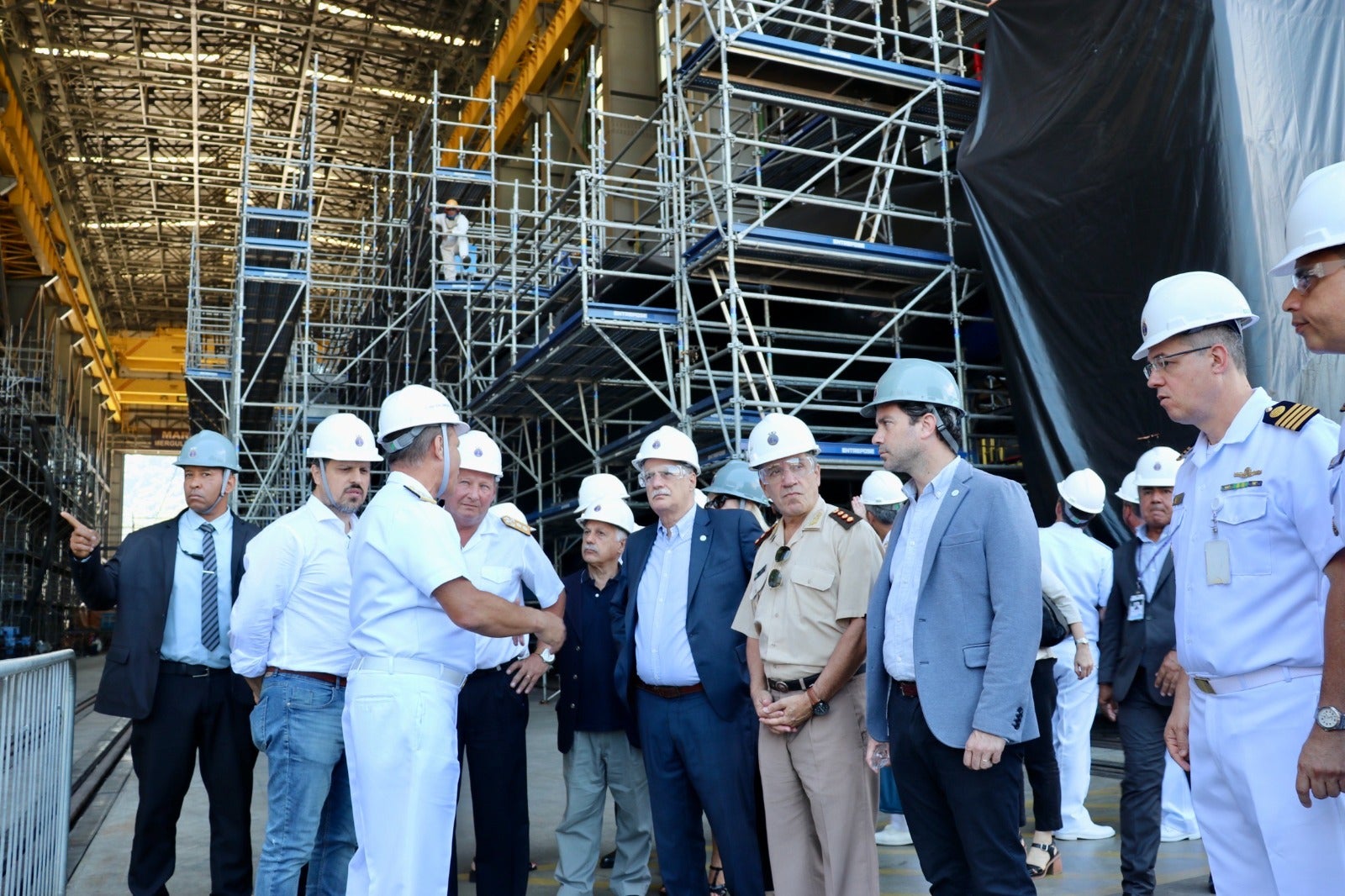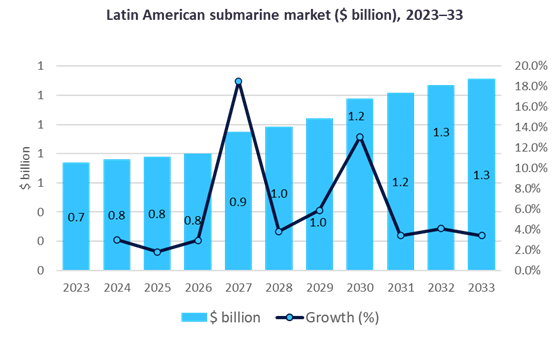
Argentina’s Defense Minister Jorge Taiana recently visited the Itaguaí shipyard in Brazil, which specialises in the construction of submarines.
Taiana toured the Itaguaí Construcciones Navales (ICN) shipyard, a state defence company specialising in Naval nuclear engineering to construct submarines in Itaguaí, Rio de Janeiro.
Scorpene to recover Argentina’s subdued submarine capacity
With the head of the Argentine Navy, Admiral Julio Guardia and authorities from the Argentinian shipyard company TANDANOR, he learned about the construction process of the Scorpene submarine, one of the models that Argentina is considering to recover its submarine capacity.
Argentina has only two diesel-electric submarines (SSK) in their inventory. The Salta-class was procured in 1972 from Howaldtswerke-Deutsche Werft (HDW), and the Santa Cruz-class was procured in 1984 by ThyssenKrupp Marine Systems, according to GlobalData.
At the end of the tour, Taiana said: “At present, our country lacks the strategic capacity to have true control and surveillance of our waters under national jurisdiction, our continental platform, and our natural resources. That is why we continue to search for the best supply of submarines, and visiting the Itaguaí shipyard has been very enlightening.”
In July 2022, Taiana led a tour of France and Germany, where he visited the shipyards of the Naval Group and thyssenkrupp to evaluate and learn about the production processes, financing conditions, and technology transfer with Argentine participation.
GlobalData aerospace, defence, and security analyst James Marques provided his take on the matter: “Argentina’s current two German submarines are currently inactive, so they don’t really have a force. They’re also from the 80s, so the Scorpene would be a large leap in capability.
“They can carry a whole range of missiles, mines and torpedoes. They would only be well suited to near-coastal-type missions, however. If they did go ahead with buying them, Brazil would benefit strongly, as well as France because it would be the variant Brazil produces on licence.”
All eyes on a South American submarine success
Itaguaí was founded in 2009 with the objective of consolidating the naval modernization of the Armed Forces in Brazil after the cooperation agreements signed between Nicolas Sarkozy and Luiz Inácio Lula da Silva. These agreements were for the construction of four submarines, as well as to receive technology transfer from French diesel-electric submarines.
Since 2010, the shipyard’s personnel have received theoretical and technological training in France, and construction began on the first of the four Brazilian Scorpene-class submarines that same year, with the Brazilian Navy launching their first Scorpene-class attack submarine in late 2018, with the second being launched two years later.
In 2012, the parts for the construction of the ships were transferred from France and integrated with those built by the ICN. By 2013, the development and manufacturing of the parts began to be carried out entirely in Brazil, giving way to the construction of the second submarine.
In 2020, the ICN and the Brazilian Navy inaugurated the Madeira Island Submarine Base with the aim of continuing the construction of Scorpenes submarines, as well as the construction of the nuclear submarine fleet starting with the Álvaro Alberto submarine ship, which will be the first nuclear-powered attack submarine in Brazil by 2029.

Other nations have also procured the Scorpene submarine. Neighbouring Chile, India and Indonesia also have the submarine within their inventory or have announced their intentions to make sure so.
Modernisation and Falklands dispute the driver of Submarine spend
According to GlobalData’s report on Argentina’s Armed Forces Equipment Inventory 2023, Argentina’s defence expenditure recorded a CAGR of 2.6% during the historic period and stood at $2.4bn in 2023, showing a commitment to modernise its inventory.
Over the forecast period, it is anticipated to register a 6.4% CAGR to a value of $3.2bn in 2028. Sovereignty disputes over the Falkland Islands and the modernisation of its armed forces have been the major drivers of Argentine defence expenditure.
The submarines sector is the largest sector within the Argentine defence market and is valued at $1.1bn during 2023–2028, according to GlobalData’s Argentina Defense Market 2023-2028 report.
Argentina is seeking to recover its submarine capacity to have better control and surveillance of its waters and visiting the Itaguaí shipyard has provided valuable insights into the production process of submarines. With this knowledge, the country hopes to make an informed decision on the best supply of submarines to meet its strategic needs.







